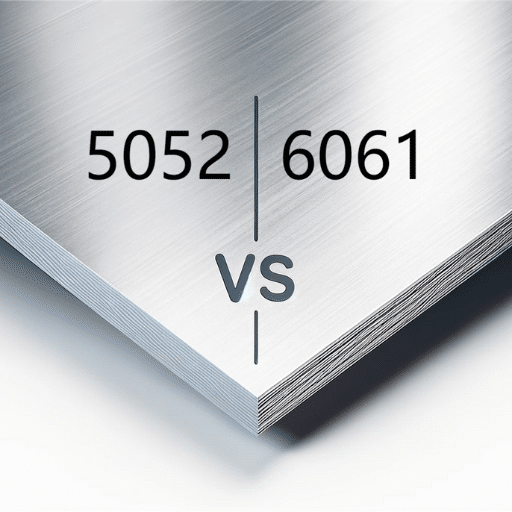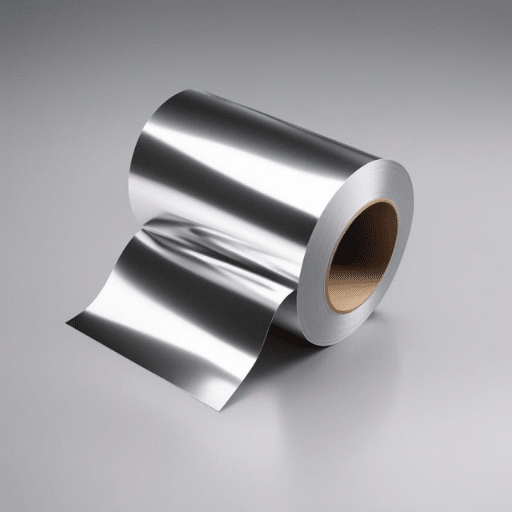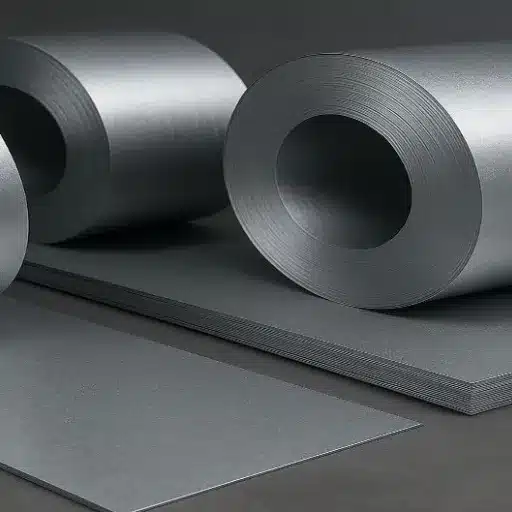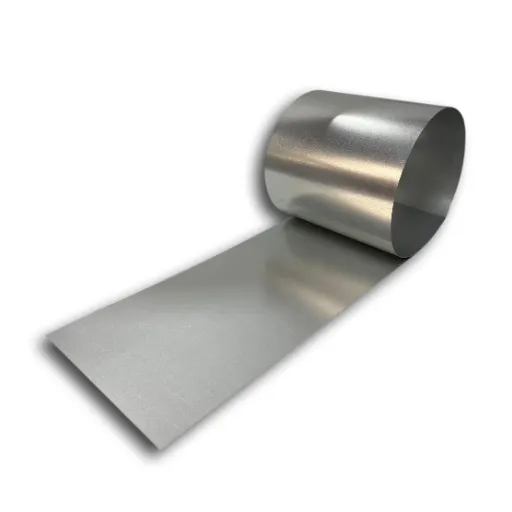Stainless steel has always been a differentiating material for industries that need something really strong, has great corrosion resistance, and is durable. Among the many types of stainless steel available, Duplex and Super Duplex stainless steel pipes stand out due to their exceptional properties and performance in demanding environments. But what exactly sets these two apart? This blog dives into the key differences between Duplex and Super Duplex stainless steel pipes while also highlighting characteristics, advantages, and best-use scenarios for each. Industry specialists or the general audience seeking explanations are equally welcome to the guide, which aims to provide details needed to make application-based decisions. The rest of this blog explains the vital distinctions that modern design and industrial engineering depend on.
What are the fundamental differences between duplex and super duplex stainless steel?
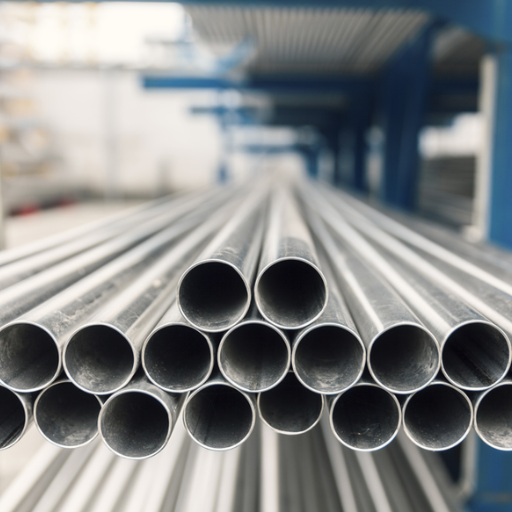
- Composition: A duplex stainless steel has a well-balanced microstructure of austenite and ferrite and contains chromium, nickel, and molybdenum in moderate amounts. Super duplex stainless steel has even greater amounts of chromium, nickel, and molybdenum, giving it better corrosion resistance.
- Strength: Super duplex strengthens the weakest areas of duplex stainless steel, hence, they can endure more stress and pressure due to the super duplex strength.
- Corrosion Resistance: Super duplex has improved alloys that provide greater resistance to pitting and crevice corrosion, especially in seawater.
- Applications: Less critical use, like storage tanks and structural elements, are manufactured from duplex stainless steel, whilst super duplex is used for more critical applications such as offshore oil and gas operations and chemical processing due to its high strength and corrosion resistance.
Users will appreciate these differences in selection for their specific needs.
How do duplex grades differ from super duplex grades?
Duplex and super duplex stainless steel primarily differ in composition, mechanical properties, and performance under extreme conditions. Standard duplex grades are significantly enhanced with super duplex due to the added value of molybdenum, nickel, and chromium because it increases their resistance against corrosion, for example, against pitting and crevice corrosion in aggressive environments. A super duplex offers critical pitting resistance equivalent (PREN) values of over 40, while a standard duplex remains in the 30-40 range.
Super duplex also outmatches duplex in tensile and yield strength, which makes it the ideal choice for extremely demanding applications such as subsea pipelines or chemical processing plants. Although strong, duplex grades are more often used in less intense environments such as storage tanks or water treatment systems.
Because of the high alloy content, the super duplex grade is more expensive than duplex stainless steel. Losing corrosion resistant strength increases the long term maintenance cost. Careful evaluation of these differences allows engineers to determine the appropriate selection of grade get the best performance against maintenance costs.
What is PREN, and how does it distinguish these stainless steels?
PREN, or Pitting Resistance Equivalent Number, is a value used to evaluate corrosion resistance of stainless steels, especially in environments with high concentrations of chlorides. It considers the proportion of important alloying metals such as chromium, molybdenum, and nitrogen. The greater the PREN value, the material’s resistance to pitting corrosion is incremented. This distinction is extremely important when comparing duplex and super duplex stainless steels since the latter usually has a higher PREN and is used for more aggressive and corrosive environments.
Understanding the microstructure differences between duplex and super duplex
A duplex stainless steel microstructure has equal proportions of austenitic and ferritic phases, or typically a 50/50 ratio. This two-phase structure remarkably strengthens corrosion resistance and usually performs better than oxidized or iron stainless steels under various conditions. Super duplex stainless steels come one step further due to more controlled chemistry and thermo-mechanical processing, which leads to enhanced homogeneity and a more refined grain structure within the microstructure.
These features result in greater strength, better resistance to pitting and crevice corrosion, and enhanced performance of stress corrosion cracking. Super duplex alloys, for instance, tend to have a yield strength of greater than double compared of standard oxidized stainless steels while also possessing higher PREN values because of the increased chromium, molybdenum, and nitrogen content. Moreover, carefully controlling the heat treatment of super duplex stainless steels ensures that secondary phases, which tend to be detrimental and lower performance in harsh conditions, are kept to a minimum. These qualities make super duplex stainless steels especially ideal for offshore platforms, chemical processing, and desalination plants, alongside their other demanding applications.
How do chemical compositions vary in duplex and super duplex stainless steel?
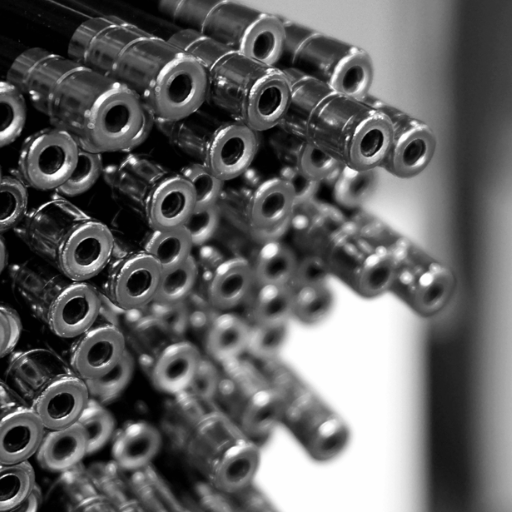
The difference between duplex and super duplex stainless steels lies in their alloying elemental composition as well as their intended use. Super duplex grades contain both higher amounts of chromium, approximately 25%, molybdenum 3-4%, and some nitrogen, than standard duplex grades. The enhanced composition provides greater strength, durability, and resistance to corrosion in harsh environments. While duplex balances 22% chromium with moderate amounts of molybdenum and nitrogen, the enriched formula of super duplex ensures improved resistance to pitting, crevice corrosion, and stress corrosion cracking, making the super duplex suitable for more extreme conditions.
What are the chromium, nickel, and molybdenum content differences?
Super duplex stainless steels have a greater concentration of chromium, nickel, and molybdenum than duplex grades. Super duplexes typically have 25-27% chromium, which increases the oxidation and corrosion resistance, especially in chloride-rich environments. The nickel content in super duplex usually lies between 6% and 8%, which improves the toughness of the alloy and its ability to withstand considerable temperature fluctuations. Molybdenum content is also higher, often in the 3-5% range, which gives increasing protection against pitting and crevice corrosion. All these additional elements combine to make super duplex stainless steels better than standard duplexes in more harsh applications like offshore structures or chemical processing plants.
How does the alloying addition of 25% chromium affect super duplex properties?
Adding 25% chromium improves the corrosion resistance of super duplex stainless steels, making them very useful in heavily stressed chloride environments. Chromium forms a passive oxide layer on the alloy surface, protecting it from oxidative damage and corrosion. Research indicates that pitting and general corrosion resistance are improved at this chromium level when compared to alloys with lower chromium grades. In addition, the high chromium content improves the alloys piss poor strength in addition to providing significant resistance to stress corrosion cracking, which is critical in high offshore oil and gas platform and desalination system applications. With the additional protection against mechanical stress as well as reducing oxidative damage, the 25% chromium content enhances the properties of super duplex stainless steel for use in industrial applications.
What elements make super duplex alloys superior to standard duplex?
Super duplex alloys outperform standard duplex alloys due to the unparalleled performance achieved in extreme environments through their enhanced super duplex chemical composition. One of the key factors is their greater molybdenum and nitrogen content. These substances greatly enhance the resistance to pitting as well as crevice corrosion making super duplex alloys prime candidates in highly aggressive media such as seawater or acidic conditions.
Moreover, the super duplex alloys also have elevated chromium content, which can be 25% or higher. This greatly enhances the overall corrosion resistance as well as the ability of the material to withstand oxidizing conditions. They also have increased mechanical strength due to a mix of austenitic and ferritic microstructures, giving a higher yield strength relative to duplex alloys, often the case being almost twice as strong. Combined with superior thermal conductivity and lower thermal expansion, these materials are exceptional for designated use in heat exchangers and chemical processing equipment, which are extremely demanding.
Super duplex alloys also have great the resistance chloride stress corrosion cracking which is a primary concern in oil and gas industries where exposure to chloride rich environments is commonplace. The combination of super duplex alloys unparalleled corrosion resistance, mechanical strength, and durability tailored them for high-performance engineered solutions and long-lasting enduring applications.
Why is corrosion resistance different between duplex and super duplex pipes?
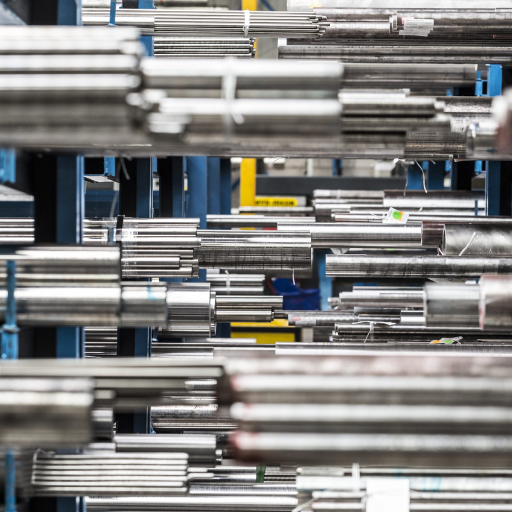
Merely composition distinguishes duplex from super duplex pipes concerning corrosion resistance. Unlike duplex pipes, super duplex pipes contain greater amounts of chromium, molybdenum, and nitrogen. These elements increase the ability to resist pitting and crevice corrosion, especially in high chloride concentration environments. This improves performance where more demanding oil and gas industry applications are common.
How does super duplex steel offer enhanced resistance to pitting?
Super duplex steel has better resistance to pitting because of its chemical composition, along with its microstructure. The high chromium content, usually above 24%, is very important because it creates a robust passive layer on the steel surface, which protects it from localized attacks in aggressive environments. Adding to this resistance is the presence of molybdenum, which often ranges from 3% to 5%, enhancing the alloy’s immunity to pitting attack due to chlorides. The nitrogen content that’s usually added up to 0.3% serves to increase the steel’s strength while protecting against localized corrosive damage. Super duplex steel is reported to have a Critical Pitting Temperature (CPT) greatly exceeding standard duplex grades, in most cases, exceeding 50°C under high chloride conditions. This makes it highly favored in industries dealing with systems that are constantly exposed to corrosive substances, seawater piping, desalination plants, and chemical processing equipment.
Comparing Corrosion Performance Against Conventional Austenitic Stainless Steel Alloys
The differences in super duplex steels when matched up against conventional austenitic stainless steel alloys show themselves vividly in the context of corrosion resistance, especially in cases with high levels of Chloride. Standard austenitic grades, such as 304 and 316, suffer from pitting and crevice corrosion because of the low molybdenum and chromium content. Meanwhile, super duplex steel has a higher alloy composition, which is usually 25% chromium, 4% molybdenum, and nitrogen, which improves pitting resistance.
CPT (critical pitting temperature) tests have shown super duplex steel consistently outdoes austenitic alloys with CPT values regularly exceeding 50c while grades 316 tend to stay around 30- 35 °C. Also, in the case of resistance to stress corrosion cracking, super duplex steel is superior due to having a duplex microstructure, which suffers less from localized corrosion and mechanical damage. This difference lets super duplex steel withstand harsher conditions such as those found offshore oil rigs, in marine environments, or in chemical process plants where sustained endurance is key under long-term demanding factors.
The operational lifespan of super duplex steels are longer due to added strength and exceptional corrosion resistance reducing maintenance costs which serves as a greatly beneficial factor in comparison to traditional austenitic options.
What environments require super duplex rather than standard duplex stainless steel?
Super duplex stainless steel is made specifically for applications that require both extreme strength and resistance to corrosion. Such conditions include exposure to seawater with high chloride content, where standard duplex steel would eventually suffer from pitting or crevice corrosion. Super duplex stainless steel is widely used in the offshore oil and gas industry for subsea pipelines, risers, and heat exchangers due to its outstanding stress corrosion cracking resistance and ability to endure high temperatures and pressures.
Moreover, super duplex stainless steel is also employed in chemical plants for handling aggressive chemicals such as sulfuric acid and chloride solutions. About mechanical stress, super duplex outperforms standard duplex grades. This is due to better mechanical properties with a higher PREN (Pitting Resistance Equivalent Number) usually above 40. It is also useful in applications where there is mechanical abrasion combined with chemical attack, protecting critical operations and providing dependable safety.
What are the mechanical property differences between these stainless steels?
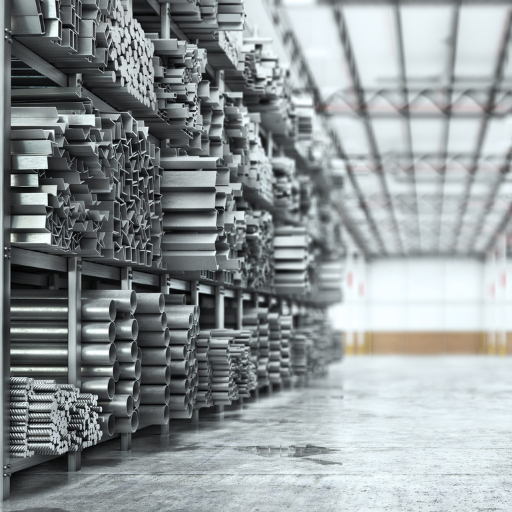
The main difference that exists in mechanical properties for duplex and super duplex stainless steels is their strength, toughness, and corrosion resistance. Super duplex stainless steels are more suited for high mechanical performance applications due to having greater tensile and yield strength than standard duplex grades. In addition to this, super duplex is tougher and can endure more challenging conditions such as extremely high pressure and fluctuating temperatures.
Another key distinction is corrosion resistance. Unlike other types, super duplex stainless steel features a Pitting Resistance Equivalent Number (PREN) greater than 40, which greatly aids in resisting pitting, crevice corrosion, and stress corrosion cracking in harsh surroundings such as seawater or chemical processing.
Lastly, super duplex stainless steels have become the preferred material for demanding applications requiring high strength and durability because of the enhanced mechanical properties.
How do the ferritic and austenitic phases affect strength in each type?
The distinctive components of ferritic and austenitic phases within super duplex stainless steel are what provide it with strength. They both contribute to the well-balanced microstructure and remarkable mechanical properties of the steel. The toughness and excellent resistance to stress corrosion cracking of the material are contributed by the ferritic phase, alongside great yield strength. The ability to withstand impact, even at low temperatures, is enhanced by the austenitic phase, which also improves the ductility of the material. The combination of these factors is what allows super duplex stainless steel to outperform many conventional stainless steels with a tensile strength between 680 to 900 MPa. Additionally, the steel’s high tensile strength, coupled with 25% flexibility, guarantees structural integrity and adaptability under high-stress conditions. These features, coupled with others, give the material unmatched dominance in offshore oil and gas sectors that need extreme strength and resilience.
Comparing duplex stainless steel properties to traditional austenitic stainless steels
Duplex stainless steels do not compare against traditional austenitic stainless steels because of their super mechanical property and enhanced corrosion resistance. For example, duplex stainless steels possess yield strengths that are roughly twice as high as austenitic grades, often exceeding 450 MPa, while most austenitic steels sit somewhere between 200 to 250 MPa. With this higher strength, thinner sections can be utilized, which reduces material costs without hindering performance.
Duplex grades excel in other factors of corrosion resistance, especially in the case for high chloride concentration environments. They resist stress corrosion cracking owing to their unique dual-phase microstructure which many austenitic grades struggle with. Performance is considerably enhanced in seawater applications by commonly used duplex grade 2205 compared to standard 304 or 316 austenitic steels.
Duplex stainless steels outperform others in thermal conductivity as well. These steels are suitable for heat transfer applications because they are more thermally conductive than austenitic steels. Additionally, their lower coefficient of thermal expansion provides greater dimensional stability under changing temperatures, an essential characteristic in the construction of heat exchangers and chemical processing equipment.
Austenitic steels may still maintain value for certain applications that require extreme toughness at cryogenic temperatures, but duplex stainless steels are rapidly becoming the material of choice for industries balancing strength, weight, and durability in rugged climates. The wide range of performance and cost effectiveness makes duplex stainless steels an alluring substitute to conventional austenitic grades.
What temperature and pressure conditions favor super duplex over duplex?
Super duplex stainless steels are specifically fabricated to withstand extremes of temperature and pressure far beyond what standard duplex grades can handle. These alloys have better stress corrosion cracking resistance, especially for applications above 280°F (130°C), where most duplex alloys would have lost much of their mechanical and corrosive strength. The super duplex grade also performs well in high-pressure applications, such as deepwater oil and gas extraction, which can exceed 10,000 psi.
This grade’s improvement is related to the higher content of molybdenum, chromium, and nitrogen, which give additional support to the material’s microstructure, enabling it to better endure harsh surroundings. For instance, super duplex’s added pitting and crevice corrosion resistance make it dependable in thermally and mechanically cyclic stressed offshore platforms and chemical processing plants. This qualifies Super Duplex for ventures that need reliable, aggressive environment solutions.
What are the welding and fabrication differences for duplex and super duplex pipes?
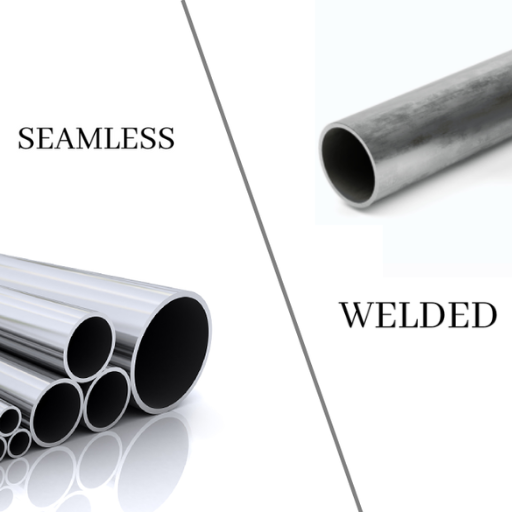
- Welding: Both materials are heat and cooling rate sensitive – requiring strict control during the welding process. However, super duplex pipes require even more stringent control of heat because their superior mechanical properties and corrosion resistance must be preserved. Both types commonly avoid preheating, but super duplex may require post weld heat treatment to prevent cracking and sustain optimal structure.
- Fabrication: Due to super duplex pipes’ strength, they are more difficult to work with than duplex pipes, making them more prone to fabrication errors. Separate cutting, bending, and machining tools may need to be engineered to deal with the increased strength and hardness. Contamination, especially with carbon steel during welding, must be avoided to mitigate future corrosion concerns.
Challenges can be effectively overcome—whether it be environmental or structural—so long as proper guidelines are followed—the same goes for fabricating and welding duplex and super duplex pipes.
Challenges in Welding Duplex and Super Duplex Stainless Steels
The duplex and super duplex stainless steels have unique challenges owing to their geology and metallurgical structure, especially when welded. One of the main problems is the correct balance concerning the proportion of austenite and ferrite phases present in the weld. An incorrect balance may result in mechanical weakness or reduced corrosion resistance. For example, increased heat may be put into the process, increasing its ferritic content and thus weakening the material’s strength.
Excessive so-called dwell times at elevated temperatures also leads to the formation of some other detrimental phases like sigma or even carbide precipitates. These phases are detrimental to the material’s toughness and corrosion resistance, especially in chloride-rich domains. Close control of heat and putting the piece down to cool rapidly immediately after will do the job.
In addition to the above, the filler materials are also critical because they need to be compatible with the base metal. Failure to do so will result in the creation of metallurgical inconsistencies due to the use of the wrong filler metals, which lead to poor performance arising from incorrect engineering. Preheating and post-weld treatments, also seeing the aid of residual stresses while preventing the stress corrosion cracking, are critical as well.
Welding in hot, humid conditions poses another problem regarding the possible fracture from hydrogen-assisted cracking. Risks like this can be managed with pre-weld material cleaning and drying, as well as the use of low-hydrogen welding procedures. Achieving strong and effective welds while surviving extreme conditions requires employing skilled welders and process controls, ASME B31.3, and ISO 15156 compliance to unmanned international welding regulations. These measures ensure performance and reliability durability.
How do heat treatment requirements differ between these materials?
The heat treatment for carbon steels and low-alloy steels differs greatly because of the differing chemical makeup and mechanical property profile of each material. For carbon steels, usually simple heat treatment operations such as stress relieving or achieving the desired mechanical properties entail ductility improvement by performing annealing, normalizing, quenching, and tempering. Most efficient results for these treatments are obtained within a somewhat limited temperature window, usually between 1450°F and 1650°F, based on carbon content.
As for low-alloy steels, they are selectively designed to include certain alloying elements such as chromium, molybdenum, or even nickel, which makes the low-alloy steels perform better under harsh conditions, high pressure, or even at elevated temperatures. Due to their alloying content, these steels often require more precise control during heat treatment, especially hardening and tempering. For example, the tempering temperature is set relatively higher, within the range of 800°F to 1200°F, to provide the toughness needed while still retaining the material’s strength. Also, these low-alloy steels might be subjected to more advanced treatments such as stress-relief heat treatment or post-weld heat treatment (PWHT) to remove residual stresses to enhance performance against cracking, failure in service
These differentiations need to be understood, especially when changes in strength and durability are required while deformation, brittleness, or failure need to be minimized in construction, energy, and transportation industries.
How do applications and industry uses differ between duplex and super duplex?
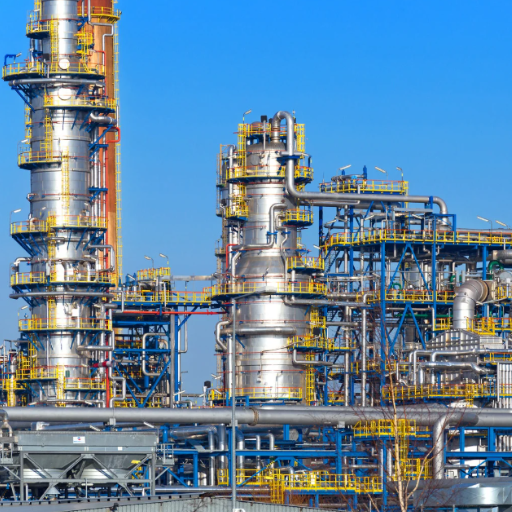
1. Oil and Gas Industry
- Duplex Stainless Steels: Used for pipes, risers, manifolds, and separators due to their stress SCC and high strength.
- Super Duplex Stainless Steels: Used in more severe applications like offshore platforms, subsea pipelines, and heat exchangers where advanced corrosion resistance and mechanical strength are needed.
2. Chemical and Petrochemical Industries
- Duplex Stainless Steels: Applied to storage tanks, pressure vessels, and other structural parts that are in contact with acid and alkaline.
- Super Duplex Stainless Steels: Best suited for equipment that operate in highly aggressive environment such as chemicals, fertilizers, and high concentrations of chlorides.
3. Construction and Infrastructure
- Duplex Stainless Steels: Used in the construction of bridges and facades because of their high strength with low weight and weather resistance.
- Super Duplex Stainless Steels: Employed in critical load-bearing elements subjected to severe marine or industrial conditions.
4. Marine Industry
- Duplex Stainless Steels: Used for propeller shafts, rudders, and other shipbuilding parts needing moderate corrosion protection.
- Super Duplex Stainless Steels: Commonly utilized in seawater piping systems as well as in desalination plants due to their exceptional resistance to pitting and Crevice corrosion.
5. Energy and Power Generation
- Duplex Stainless Steels: Used in components of wind turbines and in nuclear power plants due to their economical nature and low operational cost.
- Super Duplex Stainless Steels: Extremely useful for parts of geothermal power plants as well as other energy applications due to their extreme temperature and chemical resistance.
6. Pulp and Paper Industry
- Duplex Stainless Steels: Found in the water systems and digestion for bleaching processes, where only moderate levels of corrosion protection are needed.
- Super Duplex Stainless Steels: Utilized in parts of chemical pulp mills such as evaporators and recovery boiler,s where highly corrosive substances are dealt with.
Which industries typically use super duplex instead of standard duplex?
Several industries use super duplex stainless steel due to its enhanced mechanical and chemical properties, surface impacts, and extreme environmental factors. The oil and gas industry, for example, uses super duplex for subsea equipment, pipelines, and offshore platforms where high pressure, temperature fluctuations, and corrosive materials like chlorides are present. Similarly, in Reverse Osmosis Plants and evaporators, the desalination industry widely integrates super duplex stainless steel along with its piping systems due to the latter’s remarkable defense against pitting and stress corrosion that assists in dealing with severely saline water.
The marine industry is another major sector using super duplex where its durability makes it a good candidate for propellers, shafts, and other shipbuilding parts constantly exposed to seawater. Its use as a heat exchanger, pressure vessel, and reactor in the chemical processing industry also supports its aggressive and high temperature chemistry. Furthermore, super duplex is commonly used in power generation facilities, specifically those involving renewable sources such as tidal and offshore wind power, because of its enduring performance and low maintenance in harsh conditions.
When is the Cost of Super Duplex Justified Over Regular Duplex Steel?
Super duplex steel is one of those products whose cost can be justified in cases where it has mechanical properties, corrosion resistance, and operational life that critically impact the performance of a project. Super duplex steel generally has greater yield strength as well as greater resistance to pitting, crevice corrosion, and stress corrosion cracking relative to duplex steel. This makes it exceptionally useful in businesses that deal with extreme conditions, for instance, oil and gas, marine, chemical processing, and so on.
Take offshore applications as an example. The super duplex’s capability to resist chloride induced corrosion greatly enhances its lifespan, while drastically reducing maintenance costs. The same also applies to chemical plants that deal with aggressive acids. Due to super duplex’s enhanced durability, risks of degradation are greatly reduced, also eliminating expensive downtime or equipment failure. Also, the higher yield strength means that structural components can be manufactured from thinner materials; this reduces weight, expenses, and costs for transportation and installation in huge projects.
Although super duplex steel comes at a higher cost initially, its longer-term advantages like sophisticated harsh weather dependability, lower maintenance costs and reduced need for replacements tend to outweigh the initial investment. Because of these reasons, industries that revolve around safety, durability and high levels of efficiency, find super duplex to be a beneficial investment.
Reference Sources
- Corrosion Resistance of UNS S31803 Stainless Steel Welded Joints:
- Key Findings: The study highlights the importance of shielding gas composition and post-welding heat treatment in enhancing corrosion resistance. A mixture of Argon (87%), Helium (10%), and Nitrogen (3%) as shielding gas, combined with a solution heat treatment at 1070°C, provided the best corrosion resistance.
- Methodology: The research involved plasma-TIG welding of duplex stainless steel pipes, followed by corrosion tests (ASTM A932). Microstructural analysis was conducted using optical and scanning electron microscopy.
- Reduction of Backing Gas Sequence in Duplex Stainless Steel Weldments:
- Key Findings: Reducing the backing gas sequence during welding can lower costs while maintaining acceptable corrosion resistance and mechanical properties. The study found that a balanced Austenite/Ferrite (A/F) ratio (~38% ferrite) was achieved, meeting ASTM A932 standards.
- Methodology: The research used Gas Tungsten Arc Welding (GTAW) with ER2209 filler metal on DSS 2205 plates. Corrosion rates were measured using electrochemical tests, and microstructural changes were analyzed.
- Experiences with Super Duplex Stainless Steel in Seawater:
- Key Findings: Super duplex stainless steel (e.g., Alloy S32760) has shown excellent performance in seawater systems, with high strength and corrosion resistance. Failures were mostly associated with welds, emphasizing the need for proper welding techniques and material selection.
- Methodology: The study reviewed long-term performance data from seawater applications and combined it with laboratory tests to define safe-use limits for super duplex alloys.
Frequently Asked Questions (FAQs)
Q: What are the major distinctions between duplex and super duplex stainless steel pipes?
A: Their differences mostly stem from the chemical makeup and the operating conditions of each pipe. The composition of duplex stainless steel involves about 22% chromium and 5% nickel, plus its microstructure consists of almost 50% austenite and ferrite. Super duplex contains even higher chromium (25%) and adds other alloying elements like nitrogen. Because of this, super duplex has greater corrosion resistance, especially pitting, with the PREN value exceeding 40. Super duplex also has higher strength and better resistance to stress corrosion cracking, which is advantageous for more aggressive environments such as subsea applications.
Q: What is a duplex stainless steel equivalent to conventional austenitic grades?
A: Unlike conventional austenitic stainless steel, duplex stainless steel offers approximately twice the yield strength while maintaining excellent toughness. For example, duplex grade 2205 (UNS S32205/S31803) is often considered equivalent to austenitic 316L but with superior strength and better resistance to pitting corrosion. The duplex microstructure combining austenitic and ferritic phases provides this unique balance of properties. Super duplex grades like 2507 (UNS S32750) offer even higher performance with greater chromium content and improved corrosion resistance, serving as upgrades to standard austenitic grades in harsh environments.
Q: What are the recommended cutting speed parameters when machining duplex and super duplex stainless steel pipes?
A: When machining duplex stainless steel, the cutting speed should generally be reduced to about 50-60% of what would be used for austenitic stainless steel. For super duplex, speeds should be further reduced to 40-50%. Typical cutting speeds for turning duplex range from 80-120 m/min, while super duplex requires 60-100 m/min. These materials have higher strength and work-hardening rates, necessitating a rigid setup, sharp tools, and consistent feeds. Cutting tools should be designed specifically for duplex materials, and sufficient cooling is essential to prevent overheating, which can lead to tool wear and potential surface damage affecting corrosion resistance.
Q: How do welding procedures differ between duplex and super duplex stainless steel?
A: Welding procedures for both materials require careful control to maintain their balanced microstructure of austenite and ferrite. Super duplex is more sensitive and demands stricter control parameters. Key differences include: – Heat input: Super duplex requires lower heat input to prevent excessive ferrite formation – Filler metals: Specific matching fillers with higher nickel content are used for super duplex – Nitrogen additions: Super duplex welding often requires nitrogen-containing shielding gases to maintain nitrogen content – Post-weld treatment: More critical for super duplex to prevent HAZ (heat affected zone) issues – Interpass temperature: Super duplex typically requires lower interpass temperatures (≤150°C) to avoid precipitation of harmful phases and prevent post-weld cracking – Preheat: Generally not needed for either, but post-weld heat treatment might differ
Q: What are the temperature limitations on duplex and super duplex stainless steel pipes?
A: Duplex stainless steels perform best between around -50°C and 250°C, while super duplex typically does well in areas between -50°C and 300°C. With both materials suffering reduced toughness at the lower end of -50°C, super duplex exhibits greater performance at low temperatures without becoming brittle. Above the -50°C mark, both materials face the risk of 475°C embrittlement, where ferritic components become brittle due to microstructural changes within the steel. Furthermore, prolonged exposure to temperatures exceeding 300-550°C for super duplex may lead to detrimental intermetallic phase precipitation, along with weakening corrosion resistance, mechanical integrity, and more susceptibility to intermetallic phases due to super duplex’s high alloying content. While reduced oxidation resistance at elevated temperatures is present, super duplex is better at sustaining mechanical integrity and resistance to intermetallic oxidation at high temperatures.
Q: What is the effect of increasing the chromium content in super duplex compared to standard duplex stainless steel?
A: Increasing the chromium content from approximately 22% in standard duplex to 25% or more in super duplex significantly enhances corrosion resistance properties. This higher chromium content creates a more stable and protective passive film on the material surface, dramatically improving resistance to pitting corrosion and crevice corrosion in chloride environments. The increased chromium also contributes to a higher PREN (Pitting Resistance Equivalent Number), which exceeds 40 for super duplex. Additionally, higher chromium improves oxidation resistance at elevated temperatures. However, increasing chromium also promotes ferrite formation, requiring careful balancing with austenite-promoting elements like nickel and nitrogen to maintain the optimal duplex microstructure of approximately equal proportions of austenite and ferrite phases.

